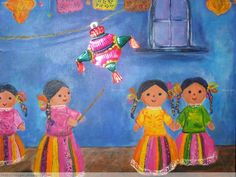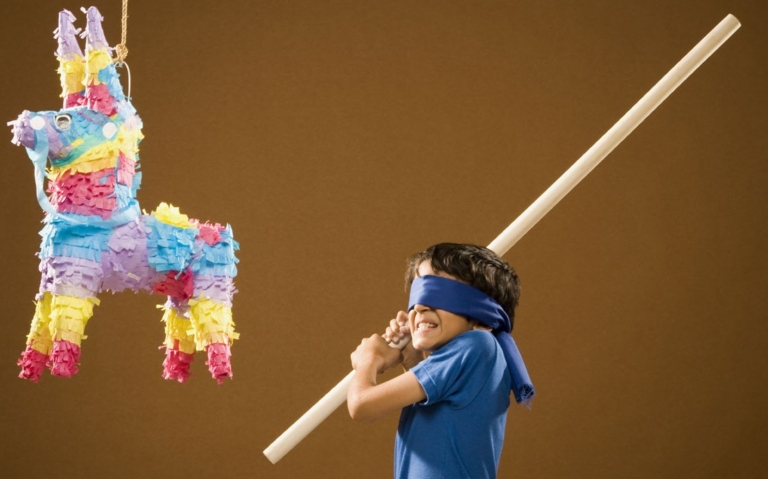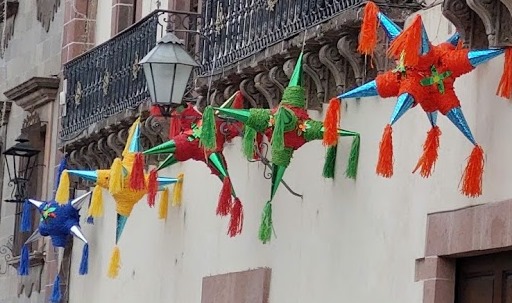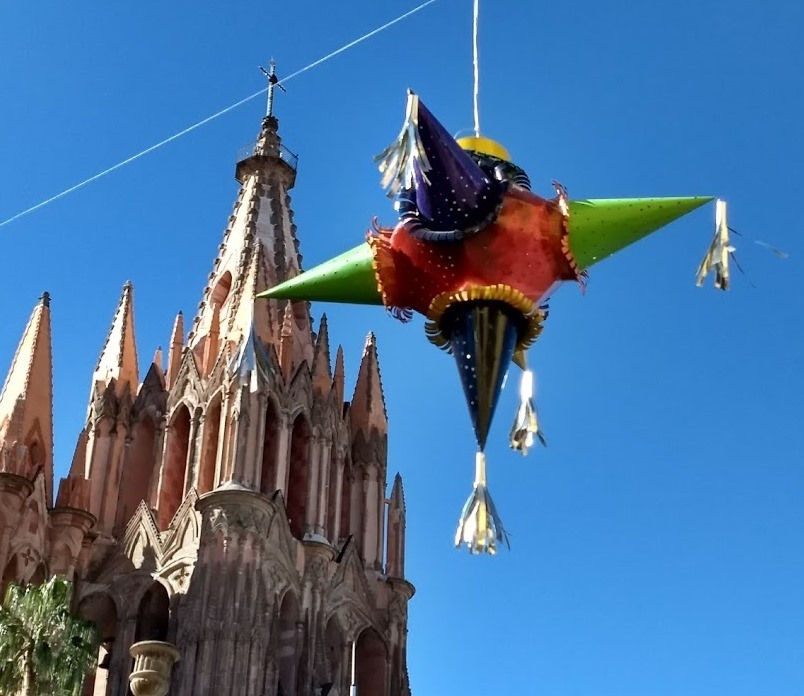Much like the cloistered nuns’ tamale business and my neighbor’s chair rental company, the piñata industry, equally dependent on social gatherings, has seen sales plummet. Some artisans, in a creative bid to survive, have added coronavirus figures to their lineups of super-heroes and Disney princesses. Painted green with a crown and spikes erupting in all directions, the pandemic piñata is now one of the most popular options.
Transforming a deadly virus’ icon into a comic effigy may be seen as a risky business decision, especially in a country with the world’s third-highest Covid-19 death toll. However, buyers have welcomed a chance to pummel a stand-in for an adversary that has decimated the economy pushing millions into poverty and taken so many lives.

As Day of the Dead shows us yearly, Mexicans laugh even at death making a virus piñata just another monster.
The piñata trade, a national tradition in Mexico, has been largely idled by the restrictions on birthday parties and other get-togethers, where cracking open the treat-filled figures is a central part of many celebrations.

The Spanish brought the European tradition to Mexico, although there were similar traditions in Mesoamerica, such as the Aztecs’ honoring the birthday of the god Huītzilōpōchtli in mid-December.
According to local records, the piñata was first used for the purposes of evangelism in 1586. The Augustinian monks modified European piñatas and created the Las Posadas tradition to co-opt the celebration of the birth of Huītzilōpōchtli .

Originally the piñata with seven cones represented the seven deadly sins of greed, gluttony, sloth, pride, envy, wrath and lust.
Sidebar: Five point piñatas represent the star over Bethlehem where Jesus was born while the donkey piñata is, of course, the faithful burro, that led the Holy Family to Egypt.
The center of the piñata represents Satan who is wearing an attractive mask to confuse people.
The person with the stick is blindfolded to represent faith that beats up the devil’s deadly sins so all are rewarded with the sweets inside. The turning, singing and shouting represent the disorientation that temptation creates.
The duration of a turn is as long as it takes to sing the piñata song, which goes like this:
Dale dale dale, no pierdas el tino,
Porque si lo pierdes, pierdes el camino.
Ya le diste uno,
Ya le diste dos,
Ya le diste tres y tu tiempo se acabó.
Which loosely translates as:
Hit-it hit-it hit-it, don’t lose your aim,
Because if you lose it, you will lose your way.
Now you’ve hit it once,
Now you’ve hit it twice,
Now you’ve hit it three times,
And your time is up.

Piñatas remain most popular during Las Posadas with birthday parties coming in second. If you are as old as me, chances are your mother made your paper-mache birthday piñata in the shape of a bird or fruit. By the arrival of Millennials piñatas assumed the shapes of popular children’s characters like Batman, Peppa Pig, Barbie and alike.
Luckily the piñata makers still have some buyers as piñatas help pass the time at home during the pandemic. Some young adults fill the piñata with secrets that get read out loud as the piñata opens up. Like being home with only your family isn’t stressful enough already!
Here in San Miguel de Allende piñatas of popular villains are exploded on Easter Sunday in the jardin to relieve the stress of the Lenten season. Folks vie to take home an appendage of someone popularly disliked that didn’t even have the common decency to release a bunch of candy when they died!
by Joseph Toone
- TripAdvisor’s top tour guide with History and Culture Walking Tours and Joseph Toone Tours.
- Amazon’s best selling author of the San Miguel de Allende Secrets books.
- Author of the Maria Dolls coloring book helping indigenous doll makers.
- Creator of San Miguel de Allende Secrets YouTube channel with over 100 videos and 1,500 views monthly.

